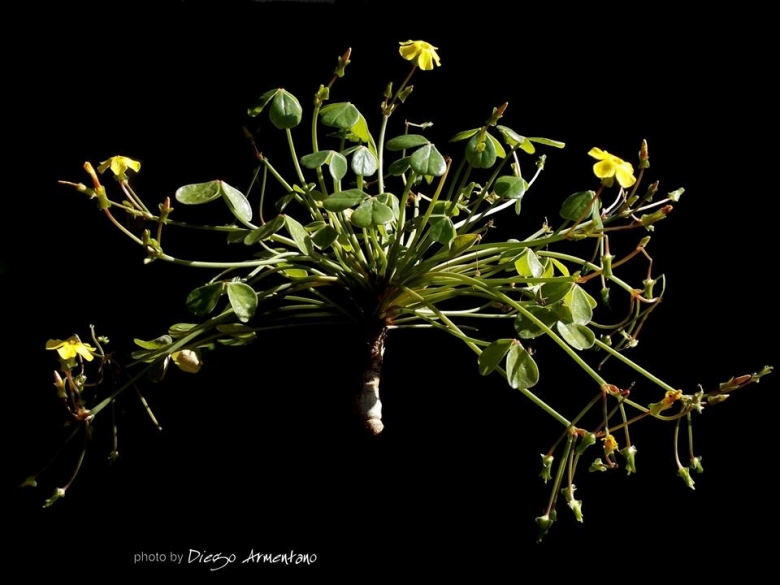Donate now to support the LLIFLE projects.
Your support is critical to our success.
Your support is critical to our success.
Accepted Scientific Name: Oxalis megalorrhiza Jacq.
Oxalis [Jacquin] 33. 1794 Jacq.

Oxalis carnosa Photo by: Diego Armentano
Synonyms:
- Oxalis carnosa Molina
See all synonyms of Oxalis megalorrhiza
back
Accepted name in llifle Database:Oxalis megalorrhiza Jacq.
Oxalis [Jacquin] 33. 1794
Synonymy: 25
- Oxalis megalorrhiza Jacq.
- Acetosella megalorhiza Kuntze
- Oxalis arborescens hort. ex Turcz.
- Oxalis bicolor Savigny
- Oxalis brevis Phil.
- Oxalis carnosa Molina
- Oxalis carnosa var. incana Reiche
- Oxalis darapskyi Phil. ex Reiche
- Oxalis borchersi Phil.
- Oxalis illapelina Phil.
- Oxalis mirbelii Dehnh.
- Oxalis ornata Phil.
- Oxalis paniculata Reiche
- Oxalis paposana Phil.
- Acetosella paposana (Phil.) Kuntze
- Oxalis paposana var. hirta R.Knuth
- Oxalis reticulata Steud.
- Acetosella reticulata (Steud.) Kuntze
- Oxalis rubrocincta Lindl.
- Acetosella rubrocincta (Lindl.) Kuntze
- Otoxalis rubrocincta (Lindl.) Small
- Oxalis solarensis R.Knuth
- Oxalis succulenta Barnéoud
- Acetosella succulenta (Barnéoud) Kuntze
- Oxalis tarapacana Phil.
Oxalis megalorrhiza var. hirta (R.Knuth) J.F.Macbr.
Publ. Field Mus. Nat. Hist., Bot. Ser. 13, pt. 3: 574. 1949
Synonymy: 3
- Oxalis megalorrhiza var. hirta (R.Knuth) J.F.Macbr.
- Oxalis bulbocastanum var. hirta (R.Knuth) Lourteig
- Oxalis carnosa var. hirta R.Knuth
back
| Your Actions | |
|---|---|
| Back to Oxalis index | |
| Back to Oxalidaceae index | |
 |
Back to Bulbs Encyclopedia index |







